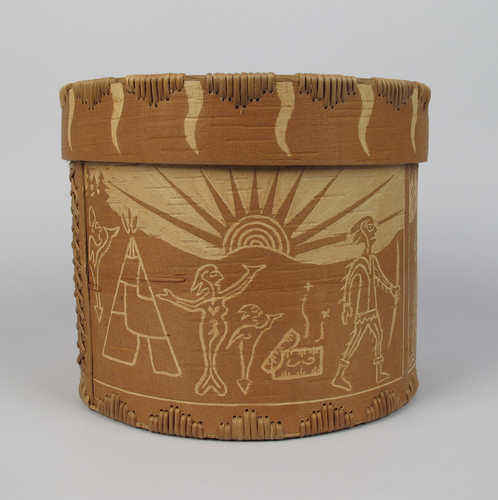Keywords: Maine Indian
Item 105027
Lucy Nicolar and Mary Ranco, Indian Island, ca. 1900
Contributed by: Maine Historical Society Date: circa 1900 Location: Old Town Media: Ink on paper
Item 104441
Lucy Nicolar Poolaw and Bruce Poolaw, Indian Island ca. 1940
Contributed by: Maine Historical Society Date: circa 1940 Location: Indian Island Media: Postcard
Item 37301
141-145 Commercial Street, Portland, 1924
Owner in 1924: William J Dennis Use: Store
Item 151808
Hague residence, Bar Harbor, 2002
Contributed by: Maine Historical Society Date: 2002 Location: Bar Harbor Clients: William Hague; Jane Hague Architect: Patrick Chasse; Landscape Design Associates
Item 151796
Lash residence, Northeast Harbor, 1999-2002
Contributed by: Maine Historical Society Date: 1999–2002 Location: Mount Desert Clients: James Lash; Deborah Lash Architect: Patrick Chasse; Landscape Design Associates
Exhibit
Passamaquoddy Indians from Washington County traveled to Portland in 1920 to take part in the Maine Centennial Exposition. They set up an "Indian Village" at Deering Oaks Park.
Exhibit
Father Rasles, the Indians and the English
Father Sebastien Rasle, a French Jesuit, ran a mission for Indians at Norridgewock and, many English settlers believed, encouraged Indian resistance to English settlement. He was killed in a raid on the mission in 1724 that resulted in the remaining Indians fleeing for Canada.
Site Page
"The extremely popular “Indian Village,” hosted by members by members of the Wabanaki community at Deering Oaks was a crowd and media favorite."
Site Page
Mount Desert Island: Shaped by Nature - The Indian Encampment
"The Indian Encampment Wabanaki family inside tent, Bar Harbor, ca. 1885Maine Historic Preservation Commission Rusticators were curious about…"
Story
30 years of business in Maine
by Raj & Bina Sharma
30 years of business, raising a family, & showcasing our culture in Maine
Story
Why environmental advocacy is critical for making baskets
by Jennifer Sapiel Neptune
My advocacy work for the Maine Indian Basketmakers Alliance
Lesson Plan
Grade Level: 6-8, 9-12, Postsecondary
Content Area: Science & Engineering, Social Studies
This lesson presents an overview of the history of the fur trade in Maine with a focus on the 17th and 18th centuries, on how fashion influenced that trade, and how that trade impacted Indigenous peoples and the environment.
Lesson Plan
Nation to Nation: Treaties and Legislation between the Wabanaki Nations and the State of Maine
Grade Level: 9-12
Content Area: Social Studies
This lesson plan asks high school students to think critically about and look closely at documentation regarding the Nation-to-Nation relationship between the Wabanaki Tribes/Nations and the State of Maine. This lesson asks students to participate in discussions about morality and legislative actions over time. Students will gain experience examining and responding to primary and secondary sources by taking a close look at documents relating to the Maine Indian Claims Settlement Act of 1980 (MICSA) and the issues that preceded and have followed the Act.



















